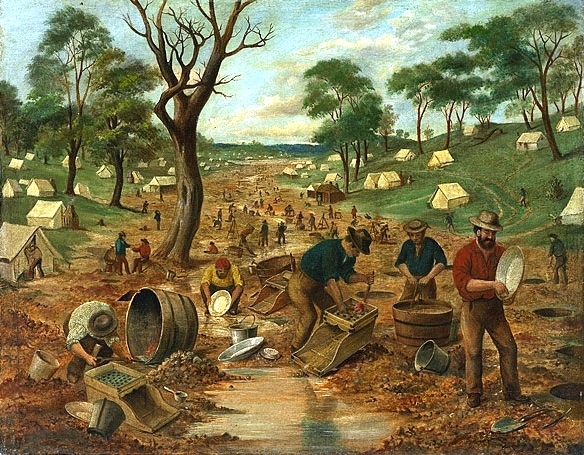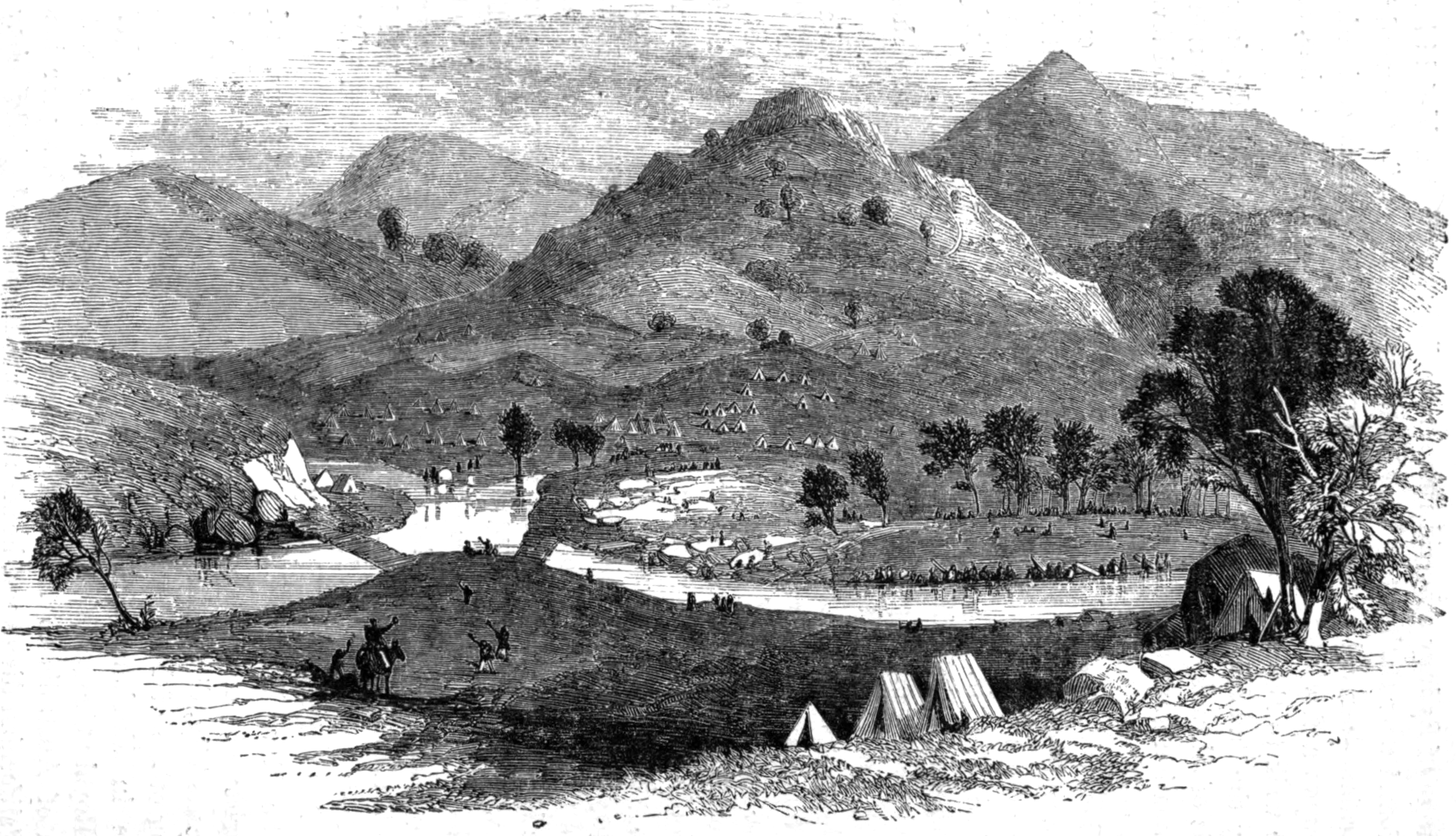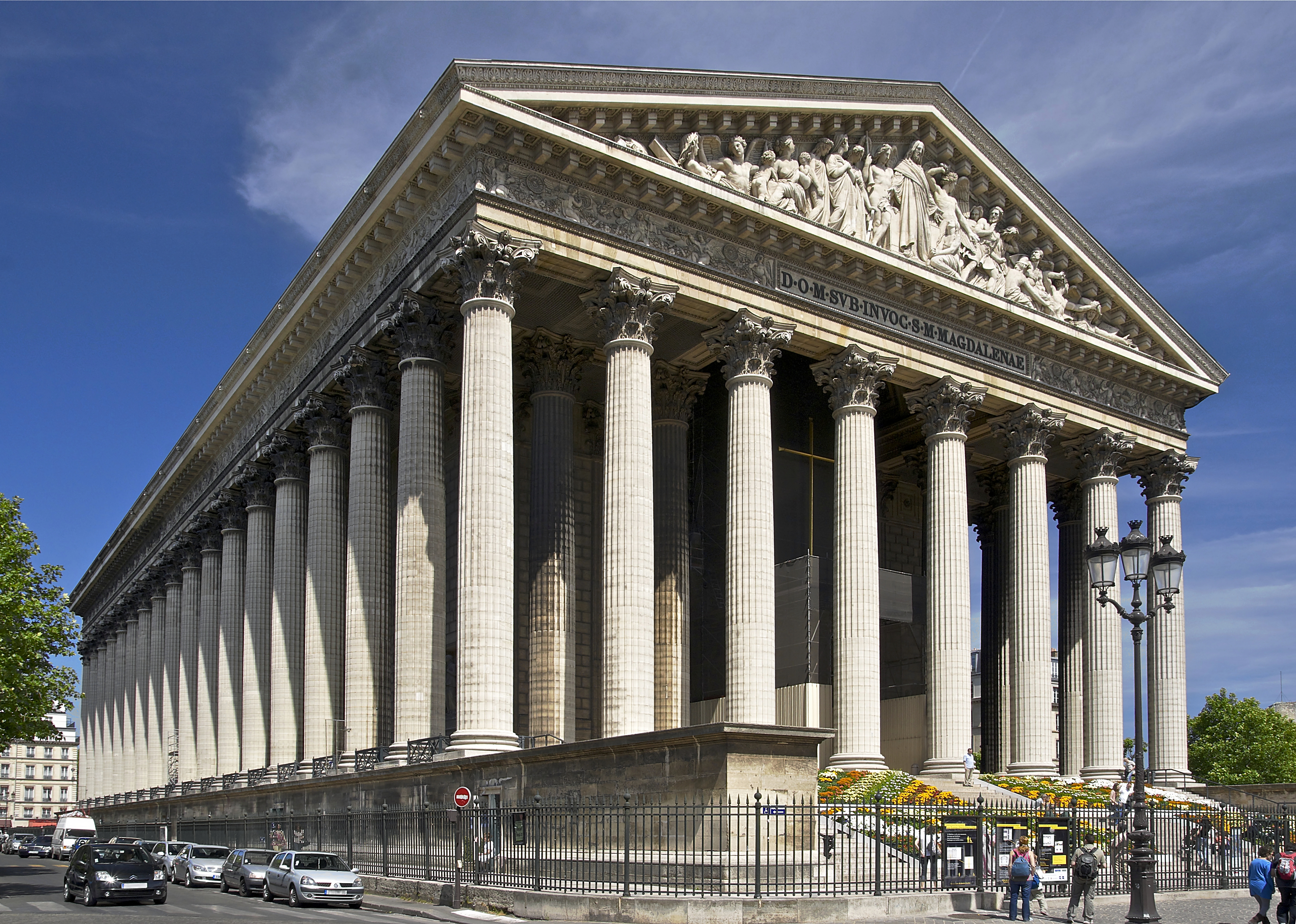|
Tuena
Tuena is a town in the Southern Tablelands of New South Wales, Australia, in Upper Lachlan Shire. It is located on Tuena Creek, tributary of the Abercrombie River, west of the state capital, Sydney. At the , Tuena and the surrounding area had a population of 59. Only nine months after the first payable discovery of gold in Australia at Ophir (start of the Australian gold rushes), gold was found at Tuena. History The site was first explored by Dr. Charles Throsby in 1819, with the first landholder, Samuel Blackman, arriving in 1836. In May 1859, Tuena was formally declared a town. It was surveyed and streets were laid out, although with the exception of Bathurst Road, little of the original town plan is evident today. Gold was discovered at Tuena in November 1851, although gold had been discovered on the Abercrombie River (the Tarshish Diggings), 10 km north some months earlier. The following extract from a contemporary newspaper announces the discovery at Tuena. ... [...More Info...] [...Related Items...] OR: [Wikipedia] [Google] [Baidu] |
Georgiana County, New South Wales
Georgiana County was one of the original Nineteen Counties in New South Wales and is now one of the 141 Cadastral divisions of New South Wales. It lies in the area about halfway between Bathurst and Goulburn. The Lachlan River is the western boundary, with the Crookwell River the southern boundary. It includes Bigga, and the area surrounding the Abercrombie River. It was part of the Electoral district of King and Georgiana from 1856 to 1859. Georgiana County was named in honour of Georgiana Cavendish, Duchess of Devonshire Georgiana Cavendish, Duchess of Devonshire (née Spencer; ; 7 June 1757 – 30 March 1806), was an English aristocrat, socialite, political organiser, author, and activist. Born into the Spencer family, married into the Cavendish family, she w ... (1757-1806). Parishes within this county A full list of parishes found within this county; their current LGA and mapping coordinates to the approximate centre of each location is as follows: Reference ... [...More Info...] [...Related Items...] OR: [Wikipedia] [Google] [Baidu] |
Australian Gold Rushes
During the Australian gold rushes, starting in 1851, significant numbers of workers moved from elsewhere in Australia and overseas to where gold had been discovered. Gold had been found several times before, but the colonial government of New South Wales ( Victoria did not become a separate colony until 1 July 1851) had suppressed the news out of the fear that it would reduce the workforce and so destabilise the economy. After the California Gold Rush began in 1848, many people went there from Australia, so the New South Wales government sought approval from the British Colonial Office for the exploitation of mineral resources, and offered rewards for finding gold. History of discovery The first gold rush in Australia began in May 1851 after prospector Edward Hargraves claimed to have discovered payable gold near Orange, at a site he called Ophir. Hargraves had been to the Californian goldfields and had learned new gold prospecting techniques such as panning and cradl ... [...More Info...] [...Related Items...] OR: [Wikipedia] [Google] [Baidu] |
Bigga, New South Wales
Bigga is a village in the Southern Tablelands of New South Wales, Australia, in Upper Lachlan Shire. It is in the Parish of Bigga, County of Georgiana. The name Bigga is thought to originate as a shortened version of the Biggs Grant. Bigga is on the western side of the Abercrombie Mountains. It is 91 km northwest of Goulburn and 52 km southeast of Cowra. Nearby towns are: Abercrombie River, Binda, Greenmantle, Grabine, Reids Flat, and Tuena. Nearby places are: Blanket Flat and Crooked Corner. These places were once towns. Bigga is noted for producing some of the world's finest superfine wool. The earliest explorer into the Bigga area was James Meehan who passed through in April 1820, travelling from Mount McDonald to Bathurst, via what was then called the Fish River, but today is known as the Lachlan River. The first official land sale in the region was of at ''Sandy Creek'' to Samuel A. Blackman in 1835. ''Sandy Creek'' was one of the first fine wool farms i ... [...More Info...] [...Related Items...] OR: [Wikipedia] [Google] [Baidu] |
Crooked Corner, New South Wales
Crooked Corner is a locality on the road from Bigga, New South Wales to Binda, New South Wales Binda is a village in the Southern Tablelands region of New South Wales, Australia in Upper Lachlan Shire. It is about 17 km north-north-west of Crookwell in the county of Georgiana. Other near-by towns or locations are: * Crooked Corner ..., which was once a town. At the , it had a population of 61. Alluvial gold was found there, in 1861, and reef gold, in 1871. In the late 1880s another reef was found to the east of the old alluvial workings, and the Palmer Gold and Silver Mining Company set up a battery there in 1888. The Five Mile Tree public school operated there from 1892 to 2009. References Upper Lachlan Shire Localities in New South Wales Southern Tablelands {{SouthernTablelands-geo-stub ... [...More Info...] [...Related Items...] OR: [Wikipedia] [Google] [Baidu] |
Abercrombie River
Abercrombie River, a perennial river that is part of the Murray–Darling basin, is located in the central west of New South Wales, Australia. Course The river rises to the east of the village of Mount Werong and generally flows westward towards its confluence with the Lachlan River at Wyangala Dam near Cowra. The river flows through freehold land as well as the Abercrombie River National Park, and provides habitat for platypus and rakali, dropping over its course of . The Abercrombie River is the furthest east of the inland flowing rivers. History The original inhabitants of the land alongside the river were Australian Aborigines of the Wiradjuri or Gundungara clans, which may have used the river as a trading route. The first European to discover the watercourse was explorer Charles Throsby on 5 May 1819, during an expedition from Sydney to the central west of New South Wales. The river was named by Commissioner John Thomas Bigge on 22 October 1820. Alluvial gold wa ... [...More Info...] [...Related Items...] OR: [Wikipedia] [Google] [Baidu] |
Upper Lachlan Shire
Upper Lachlan Shire is a local government area in the Southern Tablelands region of New South Wales, Australia. The Shire was formed in February 2004 from Crookwell Shire and parts of Mulwaree, Gunning and Yass Shires. The mayor of Upper Lachlan Shire Council is Cr. John Stafford, an unaligned politician. Towns and localities The shire includes the towns and bigger localities of: and the smaller localities of: Heritage listings The Gundungurra people are the traditional owners of most of the Upper Lachlan Shire. The Upper Lachlan Shire also has a number of European heritage-listed sites, including: * Collector, 24 Church Street (Federal Highway): Bushranger Hotel * Crookwell, Goulburn-Crookwell railway: Crookwell railway station * Gunning, Main Southern railway: Gunning railway station * Taralga, Macarthur Street: Catholic Church of Christ the King Council Current composition and election method Upper Lachlan Shire Council is composed of nine councillors elected p ... [...More Info...] [...Related Items...] OR: [Wikipedia] [Google] [Baidu] |
Blayney, New South Wales
Blayney is a farming town and administrative centre with a population of 3,378 in 2016, in the Central West region of New South Wales, Australia. Situated on the Mid-Western Highway about west of Sydney, west of Bathurst and above sea-level, Blayney is the seat of Blayney Shire Council. History Prior to European settlement the area was occupied by the Aboriginal Wiradjuri and, or, Gundungara peoples. The first European to travel through area was surveyor George Evans, in 1815 and unofficial occupation of the district began in 1821. The first land grant in the general area known as Coombing Park was issued to Thomas Icely in 1829. In 1836 the locality was known as King's Plains, with Doyle's inn being the only public-house. There was also a mill worked by a man called Lambert. In 1842 Governor Gipps proposed the creation of a village to be named 'Blayney'. His proposed site, however, was about 9 km north-east of the present site in the Kings Plains area, but ... [...More Info...] [...Related Items...] OR: [Wikipedia] [Google] [Baidu] |
Ophir, New South Wales
Ophir is the name of a locality in New South Wales, Australia in Cabonne Shire. History and discovery Ophir is located near the Macquarie River northeast of the city of Orange. Ophir is the place where gold was first discovered in New South Wales in 1851, leading to the Australian gold rushes. In popular literature it has been stated that William Tom Jr, John Lister and Edward Hargraves Edward Hammond Hargraves (7 October 1816 – 29 October 1891) was a gold prospector who claimed to have found gold in Australia in 1851, starting an Australian gold rush. Early life Edward Hammond Hargraves was born on 7 October 1816 in Gos ... found payable gold in February 1851 at the Ophir gold diggings, located at the confluence of Summer Hill Creek and Lewis Ponds Creek . Hargraves was awarded £10,500 (worth $1,125,434 in 2004 values) by the NSW Government. Although Hargraves was honoured and rewarded, it may have been William Tipple Smith, mineralogist, who first discovered ... [...More Info...] [...Related Items...] OR: [Wikipedia] [Google] [Baidu] |
Church (building)
A church, church building or church house is a building used for Christian worship services and other Christian religious activities. The earliest identified Christian church is a house church founded between 233 and 256. From the 11th through the 14th centuries, there was a wave of church construction in Western Europe. Sometimes, the word ''church'' is used by analogy for the buildings of other religions. ''Church'' is also used to describe the Christian religious community as a whole, or a body or an assembly of Christian believers around the world. In traditional Christian architecture, the plan view of a church often forms a Christian cross; the center aisle and seating representing the vertical beam with the bema and altar forming the horizontal. Towers or domes may inspire contemplation of the heavens. Modern churches have a variety of architectural styles and layouts. Some buildings designed for other purposes have been converted to churches, while many ori ... [...More Info...] [...Related Items...] OR: [Wikipedia] [Google] [Baidu] |
Gold Dredge
A gold dredge is a placer mining machine that extracts gold from sand, gravel, and dirt using water and mechanical methods. The original gold dredges were large, multi-story machines built in the first half of the 1900s. Small suction machines are currently marketed as "gold dredges" to individuals seeking gold: just offshore from the beach of Nome, Alaska, for instance. A large gold dredge uses a mechanical method to excavate material (sand, gravel, dirt, etc.) using steel "buckets" on a circular, continuous "bucketline" at the front end of the dredge. The material is then sorted/sifted using water. On large gold dredges, the buckets dump the material into a steel rotating cylinder (a specific type of trommel called "the screen") that is sloped downward toward a rubber belt (the stacker) that carries away oversize material (rocks) and dumps the rocks behind the dredge. The cylinder has many holes in it to allow undersized material (including gold) to fall into a sluice ... [...More Info...] [...Related Items...] OR: [Wikipedia] [Google] [Baidu] |
School
A school is an educational institution designed to provide learning spaces and learning environments for the teaching of students under the direction of teachers. Most countries have systems of formal education, which is sometimes compulsory. In these systems, students progress through a series of schools. The names for these schools vary by country (discussed in the '' Regional terms'' section below) but generally include primary school for young children and secondary school for teenagers who have completed primary education. An institution where higher education is taught is commonly called a university college or university. In addition to these core schools, students in a given country may also attend schools before and after primary (elementary in the U.S.) and secondary (middle school in the U.S.) education. Kindergarten or preschool provide some schooling to very young children (typically ages 3–5). University, vocational school, college or seminary ma ... [...More Info...] [...Related Items...] OR: [Wikipedia] [Google] [Baidu] |
Local Court Of New South Wales
The Local Court of New South Wales is the lowest court in the judicial hierarchy of the Australian state of New South Wales. Formerly known as the Court of Petty Sessions and the Magistrates Court, there are more than 160 branches across New South Wales where the Local Court has jurisdiction to deal with the majority of minor civil and criminal matters. Matters are heard before a single magistrate sitting without a jury, addressed as "Your Honour" or "Sir" (but no longer "Your worship"). The Local Court has no jurisdiction for claims in equity. On appeal, matters may be heard by the District Court of New South Wales including appeals against the sentence or conviction decided in the Local Court. The Chief Magistrate of the Local Court is Judge Peter Johnstone, former President of the NSW Children's Court, who was appointed in September 2021. Judge Johnstone succeeded Judge Graeme Henson, appointed in 2006. History In 1788, following the landing of the First Fleet and esta ... [...More Info...] [...Related Items...] OR: [Wikipedia] [Google] [Baidu] |






